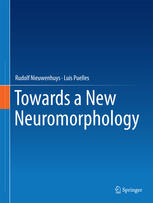

Most ebook files are in PDF format, so you can easily read them using various software such as Foxit Reader or directly on the Google Chrome browser.
Some ebook files are released by publishers in other formats such as .awz, .mobi, .epub, .fb2, etc. You may need to install specific software to read these formats on mobile/PC, such as Calibre.
Please read the tutorial at this link: https://ebookbell.com/faq
We offer FREE conversion to the popular formats you request; however, this may take some time. Therefore, right after payment, please email us, and we will try to provide the service as quickly as possible.
For some exceptional file formats or broken links (if any), please refrain from opening any disputes. Instead, email us first, and we will try to assist within a maximum of 6 hours.
EbookBell Team

5.0
40 reviewsThis book demonstrates that the systematic study of gene expression patterns in embryonic and adult brains, in combination with selected data from earlier studies, can pave the way for a new neuromorphology, the most salient features of which may be summarized as follows: (1) Causal analysis of molecular patterning at neural plate and early neural tube stages has shown that the CNS is essentially organized into transverse neural segments or neuromeres and longitudinal zones which follow the curved axis of the brain. (2) The FMUs initially represent thin neuroepithelial fields; in the course of further development they are transformed into three-dimensional radial units, extending from the ventricular surface to the meningeal surface of the brain. (3) The principal histogenetic processes, including cellular proliferation, cell migration and differentiation, essentially take place within the confines of these radial units, controlled by characteristic sets of developmental regulatory genes. (4) Although most developing neurons migrate radially and settle within their own FMU, at many locations neuroblasts leave the FMU where they were produced and migrate tangentially to other nearby or remote territories, colonizing parts of foreign FMUs. (5) Many structural complexes in the adult brain, including the cerebral and cerebellar cortices, are the products of radial and tangential intermingling of migrated cell contingents.